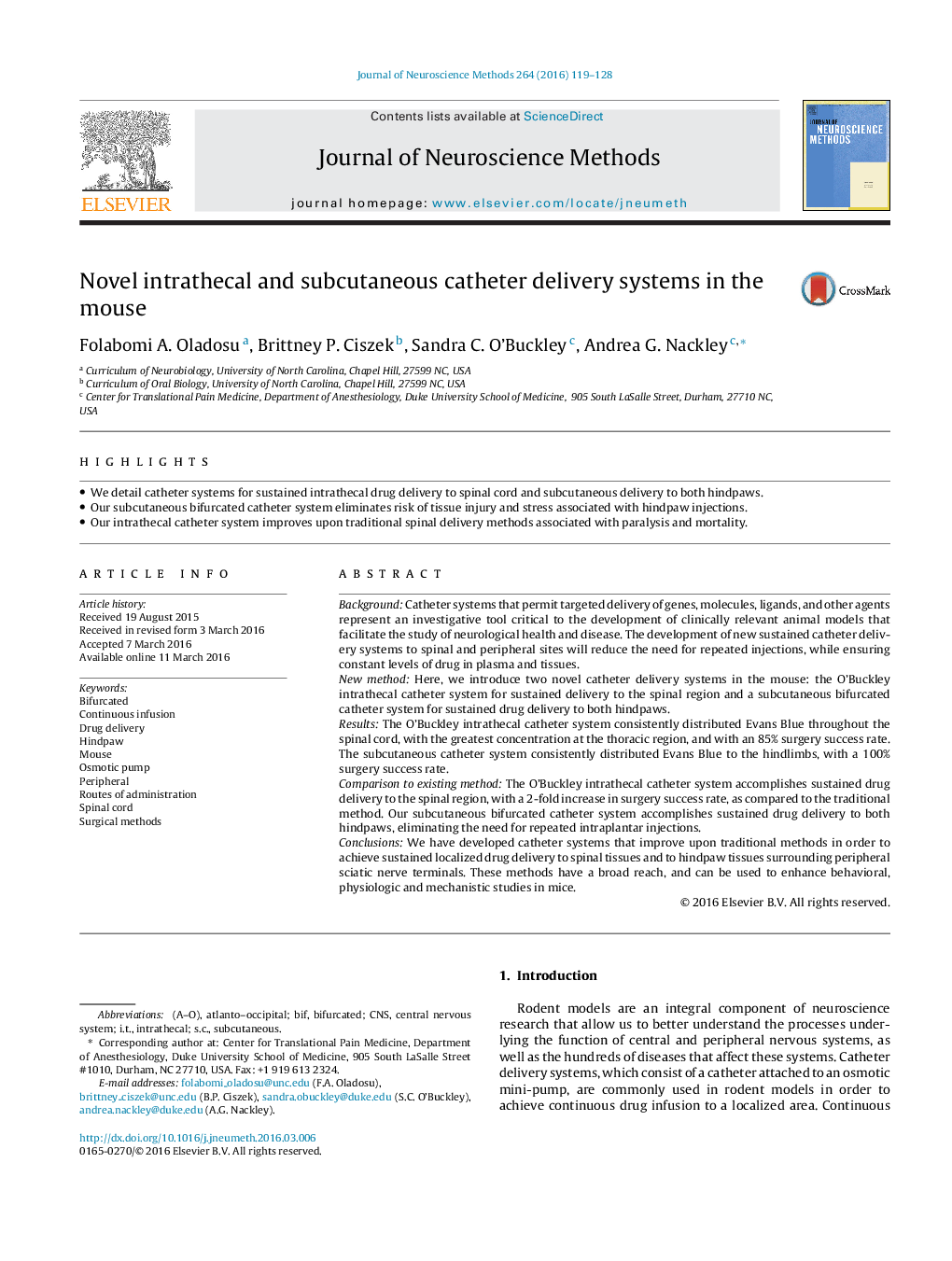| Article ID | Journal | Published Year | Pages | File Type |
|---|---|---|---|---|
| 6267823 | Journal of Neuroscience Methods | 2016 | 10 Pages |
â¢We detail catheter systems for sustained intrathecal drug delivery to spinal cord and subcutaneous delivery to both hindpaws.â¢Our subcutaneous bifurcated catheter system eliminates risk of tissue injury and stress associated with hindpaw injections.â¢Our intrathecal catheter system improves upon traditional spinal delivery methods associated with paralysis and mortality.
BackgroundCatheter systems that permit targeted delivery of genes, molecules, ligands, and other agents represent an investigative tool critical to the development of clinically relevant animal models that facilitate the study of neurological health and disease. The development of new sustained catheter delivery systems to spinal and peripheral sites will reduce the need for repeated injections, while ensuring constant levels of drug in plasma and tissues.New methodHere, we introduce two novel catheter delivery systems in the mouse: the O'Buckley intrathecal catheter system for sustained delivery to the spinal region and a subcutaneous bifurcated catheter system for sustained drug delivery to both hindpaws.ResultsThe O'Buckley intrathecal catheter system consistently distributed Evans Blue throughout the spinal cord, with the greatest concentration at the thoracic region, and with an 85% surgery success rate. The subcutaneous catheter system consistently distributed Evans Blue to the hindlimbs, with a 100% surgery success rate.Comparison to existing methodThe O'Buckley intrathecal catheter system accomplishes sustained drug delivery to the spinal region, with a 2-fold increase in surgery success rate, as compared to the traditional method. Our subcutaneous bifurcated catheter system accomplishes sustained drug delivery to both hindpaws, eliminating the need for repeated intraplantar injections.ConclusionsWe have developed catheter systems that improve upon traditional methods in order to achieve sustained localized drug delivery to spinal tissues and to hindpaw tissues surrounding peripheral sciatic nerve terminals. These methods have a broad reach, and can be used to enhance behavioral, physiologic and mechanistic studies in mice.
